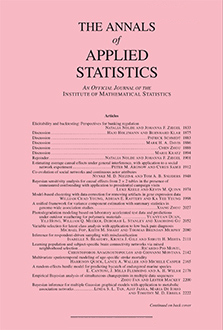Abstract
Many investigations have used panel methods to study the relationships between fluctuations in economic activity and mortality. A broad consensus has emerged on the overall procyclical nature of mortality: perhaps counter-intuitively, mortality typically rises above its trend during expansions. This consensus has been tarnished by inconsistent reports on the specific age groups and mortality causes involved. We show that these inconsistencies result, in part, from the trend specifications used in previous panel models. Standard econometric panel analysis involves fitting regression models using ordinary least squares, employing standard errors which are robust to temporal autocorrelation. The model specifications include a fixed effect, and possibly a linear trend, for each time series in the panel. We propose alternative methodology based on nonlinear detrending. Applying our methodology on data for the 50 US states from 1980 to 2006, we obtain more precise and consistent results than previous studies. We find procyclical mortality in all age groups. We find clear procyclical mortality due to respiratory disease and traffic injuries. Predominantly procyclical cardiovascular disease mortality and countercyclical suicide are subject to substantial state-to-state variation. Neither cancer nor homicide have significant macroeconomic association.
Citation
Edward L. Ionides. Zhen Wang. José A. Tapia Granados. "Macroeconomic effects on mortality revealed by panel analysis with nonlinear trends." Ann. Appl. Stat. 7 (3) 1362 - 1385, September 2013. https://doi.org/10.1214/12-AOAS624
Information





